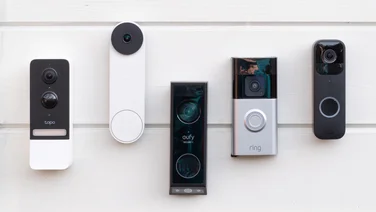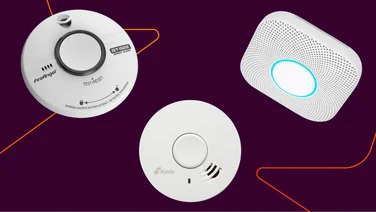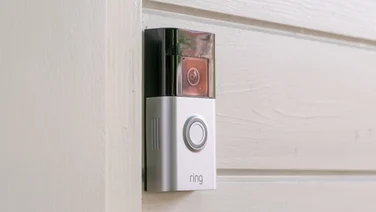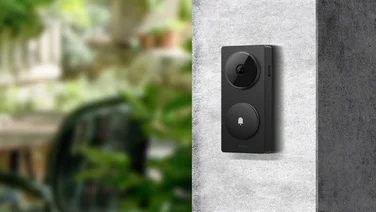To help us provide you with free impartial advice, we may earn a commission if you buy through links on our site. Learn more

- Great image quality
- Decent price
- Some performance issues
- Poor video player
The last TP-Link camera we tested, the Kasa Cam 120, was a well-priced indoor camera. Now the company is back with the Kasa Cam KC200, an outdoor security camera that costs just £100.
The KC200 shares a lot of specs with its indoor brother, including the same 130-degree wide-angle lens – enough to capture most of a garden – and a 1080p sensor. The difference is in the camera body, with this model getting an IP65 waterproof rating, which means it’s dust-tight and protected against rain.
TP-Link Kasa Cam KC200 review: Features

To waterproof the housing, TP-Link has opted for a captive USB, moulded into the rear of the camera. The cable is 3m long, ending in a traditional USB Type-A port, and needs to run through a wall into your home to power the camera via the provided USB power adaptor. It’s not a perfect solution: captive cables are a pain, as they’re hard to replace if they break.
The Kasa Cam KC200 comes with a mount that can be placed on a flat surface or that can be attached to a wall via two screws. Its socket design gives you a large degree of movement, so that you can focus the KC200 where you want it, although you have to be a bit careful as it’s also easy to trap the cable in the mount.
The Kasa Cam is controlled via the Kasa app. Connecting the camera to your home network is easy: you first connect your phone to the camera’s Wi-Fi network, then follow the onscreen instructions to connect to your home network. This model will only connect to 2.4GHz networks in the UK.
By default, the Kasa Cam KC200 is set to record at 720p, but you can up this to 1080p. This uses more bandwidth and needs a stronger wireless signal, but the boost in image quality makes it worth it; just be careful if you’re on a limited broadband connection.
READ NEXT: Best home security camera
TP-Link Kasa Cam KC200 review: Operation
With the standard settings, the KC200 monitors the entire image for movement and sends you a notification if it spots anything, recording a clip to the free cloud storage, Kasa Care, which saves videos for two days. Peculiarly, the actual range of purchasable Kasa Care plans hasn’t formally launched in the UK yet. Until that time comes, you get a free trial of the Kasa Care Premium service, which keeps clips for 30 days.
Outside, those settings are likely to mean lots of clips, particularly if the camera is focused on somewhere quite busy, such as a street outside your home. Fortunately, you can add Activity Zones to focus motion detection on the areas that you’re interested in.
You can also adjust motion sensitivity, and set the minimum length for which motion must occur in order to trigger a recording. By default, any motion that lasts more than 0.1 seconds is recorded, but you can adjust this all the way up to five seconds.
TP-Link Kasa Cam KC200 review: Performance

While these tweaks can generally prevent you from getting too many notifications, we did have an issue with the camera picking up movement due to the sun emerging from clouds and casting shadows. This was the same issue as with the KC120, and while the issue isn’t as pronounced here, we still had a fair number of false positives.
Another of our complaints with the KC120 was that detected movement often generated a flood of alerts. With the KC200, there’s a feature, enabled by default, that restricts the app to sending only one alert every five minutes. It certainly reduced the flow of ‘pings’ we received, but even better would have been the addition of configurable smart alerts, so you only – for example – get notified when a person, animal or vehicle is detected.
There’s a schedule for controlling when the camera can record and when it should be powered down, but the KC200 lacks a geofencing option to operate the camera automatically when you go out or return home.
Video is saved into the Activity section of the app. It’s a simple app, but you can jump to a specific date and you can filter by device to make finding the clip you want easier. Each clip also has a thumbnail, which helps.
The video player, however, is poor. If you scrub through the clip, the motion pauses, so you can’t easily jump ahead. You can download any clips to your phone for easier viewing and for preserving video evidence.
Fortunately, image quality is better. During the day, the video is a little soft and some details, particularly in the background get smoothed out. However, it was easy to find a frame where we could get a sharp image of someone walking in front of the camera.
At night, the camera uses its IR lights to illuminate the view. The image gets a bit softer, as is true for all cameras using IR, and facial features were harder to make out, but we still managed to find a sharp frame. If you spot someone live, you can use the two-way talk feature to warn them off. There’s also a siren, but this isn’t particularly loud.
READ NEXT: Ring stick-up cam review
TP-Link Kasa Cam KC200: Verdict
A few issues with motion detection generating false alerts aside, the KC200 is great value, particularly as you get the free cloud storage. If you want something with great image quality at a low price, then this is a decent choice. If you’re looking for better image quality, better motion detection and continuous recording, spend a bit more on the Nest Cam Outdoor instead.






